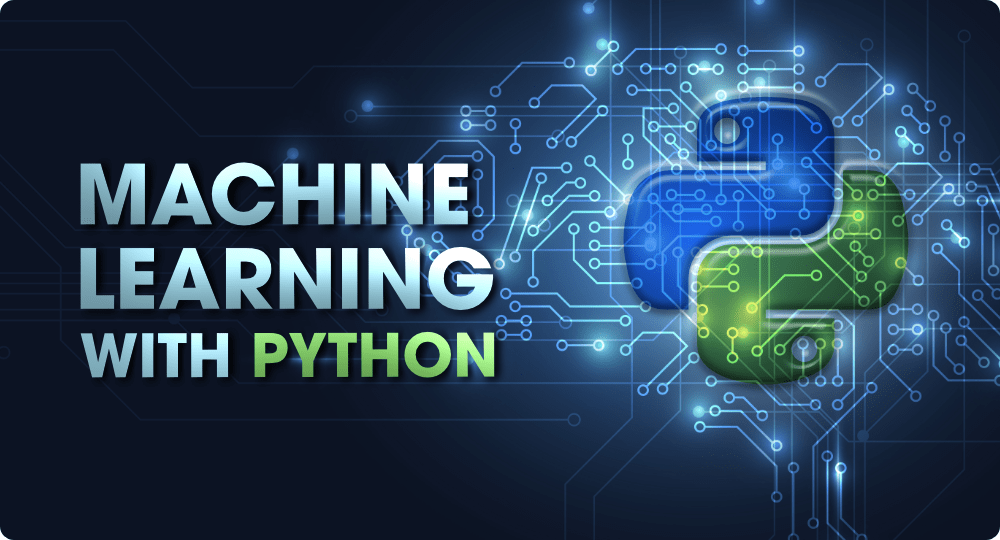Python is widely used in the finance industry for various innovative projects, including fintech applications and financial algorithms. Its versatility and extensive library ecosystem make it a popular choice for implementing cutting-edge solutions in finance.
One such innovative project in finance is the development of a credit default risk prediction model using the LightGBM algorithm. By leveraging Python’s machine learning capabilities, financial institutions can analyze large volumes of data and accurately assess credit risks, enabling them to make informed lending or investment decisions.
Python’s role in the finance industry extends beyond credit risk prediction. It is also widely utilized in areas such as stock price prediction, credit risk assessment, customer satisfaction prediction, and share market analysis. These projects leverage Python’s ability to analyze historical data, apply predictive models, and generate valuable insights for financial decision-making.
To implement these finance projects, Python developers often rely on popular libraries such as NumPy, Pandas, Pyalgotrade, and FinmarketPy. These libraries provide powerful tools and functions for data manipulation, analysis, and visualization, making them essential for finance-related applications.
What is Python used for in the Finance Industry?
Python is widely adopted in the finance industry, playing a crucial role in banking operations, finance data analysis, and the development of investment tools. Due to its simplicity, versatility, and extensive libraries, Python has become the go-to language for financial professionals looking to streamline processes, analyze data, and make informed decisions.
Finance data analysis is a fundamental aspect of the industry, as it involves extracting valuable insights from large volumes of financial data. Python’s robust libraries, such as NumPy and Pandas, provide powerful tools for data manipulation, cleaning, and statistical analysis. These libraries enable finance professionals to perform complex calculations, visualize data, and gain a deeper understanding of market trends.
Python’s integration with machine learning algorithms has revolutionized finance by automating tasks, reducing risks, and optimizing investments. Machine learning models can analyze vast amounts of financial data to detect patterns, predict market trends, and assess credit risks. Pyalgotrade and FinmarketPy are widely used Python libraries that facilitate the development and implementation of machine learning models in finance projects.
| Benefits of Python in Finance |
|---|
| Efficient data analysis and processing |
| Easy integration with machine learning algorithms |
| Extensive libraries for statistical analysis and visualization |
| Flexibility to develop proprietary tools |
| Scalability for handling large volumes of financial data |
In conclusion, Python has emerged as a game-changer in the finance industry, empowering professionals to make data-driven decisions, automate processes, and innovate in various finance projects. Its wide adoption, extensive libraries, and integration with machine learning algorithms make it an invaluable tool for banking operations, finance data analysis, and the development of investment tools.
Machine Learning in Finance Using Python

Machine learning algorithms are increasingly being used in finance to analyze large volumes of data, and Python provides a powerful platform for implementing these algorithms. The finance industry generates vast amounts of data, from market trends and stock prices to customer behavior and credit-related information. By leveraging machine learning, financial institutions can gain valuable insights, make data-driven decisions, and improve their overall performance.
Python’s versatility and robust ecosystem of libraries make it an ideal language for implementing machine learning models in finance. One of the innovative projects in this field is the development of a credit default risk prediction model using the LightGBM algorithm. This model helps banks and other financial institutions assess the likelihood of a borrower defaulting on their credit obligations. By accurately predicting credit risks, institutions can better manage their portfolios and mitigate potential losses.
Machine Learning Algorithms in Finance
Python offers a wide range of machine-learning Frameworks that can be applied to finance projects. Some popular algorithms include:
- Random Forest: A versatile algorithm used for classification and regression tasks, often employed to predict stock prices.
- Gradient Boosting: Algorithms like LightGBM and XGBoost are widely used for credit risk assessment and stock price prediction.
- Neural Networks: Deep learning models, such as recurrent neural networks (RNNs) and convolutional neural networks (CNNs), are used for tasks like sentiment analysis and customer satisfaction prediction.
These algorithms, along with many others, can be implemented using Python libraries such as NumPy, Pandas, Pyalgotrade, and FinmarketPy. These libraries provide efficient data manipulation and analysis capabilities, making it easier to preprocess and explore financial data before applying machine learning models.
| Python Libraries | Description |
|---|---|
| NumPy | A fundamental library for scientific computing in Python, providing support for multi-dimensional arrays and mathematical functions. |
| Pandas | A versatile library for data manipulation and analysis, offering powerful data structures and tools for handling structured data. |
| Pyalgotrade | A library specifically designed for algorithmic trading, providing tools for backtesting and executing trading strategies. |
| FinmarketPy | A library that integrates financial data from various sources, offering functionalities for data retrieval and analysis. |
By harnessing the capabilities of these libraries, finance professionals can accelerate the development of machine learning projects and leverage Python’s extensive community support for guidance and troubleshooting.
Can Python be used to Predict a Loan Default Risk?

One example of an innovative finance project is the construction of a credit default risk prediction model using the LightGBM algorithm in Python. This project aims to accurately assess the risk of credit defaults, allowing financial institutions to make informed decisions and mitigate potential losses. Python’s extensive libraries and powerful machine learning capabilities make it an ideal choice for developing such models.
The LightGBM algorithm, a gradient boosting framework, is particularly effective for credit risk prediction. It leverages the strengths of gradient boosting, such as handling large datasets, handling missing data, and providing accurate predictions. Python’s ability to easily implement and fine-tune machine learning algorithms makes it a valuable tool for building robust credit risk prediction models.
When constructing a credit default risk prediction model, it is crucial to analyze and understand the data. Python’s Pandas library provides powerful data analysis tools, allowing finance professionals to preprocess and clean datasets efficiently. Additionally, Python’s NumPy library enables efficient manipulation and computation on large arrays of numerical data, further enhancing the data analysis process.
Some useful Python Libraries for predicting loan default risks
| Python Libraries | Benefits |
|---|---|
| NumPy | Efficient array manipulation and computation on numerical data. |
| Pandas | Powerful data analysis and preprocessing capabilities. |
| Pyalgotrade | Algorithmic trading library for developing and backtesting trading strategies. |
| FinmarketPy | Provides financial data retrieval and analysis functionality. |
By utilizing these Python libraries, finance professionals can streamline the development of credit default risk prediction models. These models play a vital role in the finance industry by assisting with risk assessment, enabling institutions to make informed lending and investment decisions.
| Benefits of Python in Credit Risk Assessment |
|---|
| Robust framework for credit risk evaluation |
| Enables automation of credit risk assessment processes |
| Facilitates the creation of accurate credit scoring models |
| Supports integration of external data sources |
| Promotes collaboration within the finance industry |
| Reduces development time through pre-built algorithms |
Can Python be used to predict Stock Market Movements?

Python offers powerful capabilities for predicting stock prices, enabling investors to make informed decisions based on historical data and advanced predictive models. With the abundance of financial data available, Python provides the tools to analyze and understand market trends, facilitating more accurate predictions of stock prices.
When it comes to stock price prediction, Python offers various libraries and algorithms that can be leveraged to develop robust models. For instance, the scikit-learn library provides a wide range of machine learning algorithms, such as random forests and support vector machines, to analyze historical stock data and forecast future prices. These algorithms can handle large volumes of data and effectively capture patterns and relationships that influence stock price movements.
In addition to machine learning algorithms, Python’s Pandas library is instrumental in managing and manipulating financial data. It allows for efficient data preprocessing, cleaning, and feature engineering, ensuring that the input to the predictive models is accurate and relevant. Through the use of Pandas, investors can easily apply statistical techniques and extract meaningful insights from the vast amount of financial data available.
| Python Libraries for Stock Price Prediction | Description |
|---|---|
| scikit-learn | A comprehensive library offering various machine learning algorithms for stock price prediction. |
| Pandas | A powerful library for data manipulation and preprocessing, essential for managing financial data. |
Moreover, Python’s flexibility allows investors to incorporate other data sources into their stock price prediction models. This could include external factors such as economic indicators, news sentiment, or social media sentiment. By integrating these additional factors into the analysis, investors can gain a more comprehensive understanding of the factors driving stock prices and make more accurate predictions.
Python’s extensive libraries, efficient data processing capabilities, and support for machine learning algorithms make it a valuable tool for stock price prediction in the finance industry. Whether it’s individual investors or financial institutions, Python empowers them to make data-driven decisions and maximize their investment strategies.
However, the stock market is by definition unpredictable and data-driven trading will always have significant risk and should usually be coupled to human traders or human-defined metrics and rules, not pure data analysis.
Can Python be used to predict Customer Satisfaction?
Python facilitates accurate customer satisfaction prediction in the finance industry, enabling businesses to identify areas for improvement and enhance overall customer experience. By leveraging Python’s powerful data analysis and machine learning capabilities, finance companies can analyze customer data and develop predictive models to anticipate satisfaction levels.
Machine learning algorithms in Python can process large volumes of customer data, including transaction history, feedback, and demographic information, to identify patterns and trends. These algorithms can then be used to classify and predict customer satisfaction levels based on various factors. For example, Python can analyze customer interactions with financial products or services and predict whether a customer is likely to be satisfied or not.
One of the key advantages of using Python for customer satisfaction prediction is the availability of open-source libraries and frameworks. Libraries such as scikit-learn and TensorFlow provide pre-built machine learning algorithms that can be easily implemented in Python. These libraries enable finance professionals to develop accurate prediction models without extensive programming knowledge.
Benefits of using python for Customer Satisfaction Prediction
- Identifying dissatisfied customers: Python allows finance companies to identify dissatisfied customers in real-time, enabling proactive interventions to address their concerns and prevent churn.
- Improving customer experience: Accurately predicting customer satisfaction helps businesses uncover areas for improvement and enhance overall customer experience, leading to increased customer loyalty and retention.
- Personalized marketing strategies: By understanding customer satisfaction levels, finance companies can tailor their marketing strategies to target specific customer segments effectively.
| Finance Company | Customer Satisfaction Rating | Improvement Actions |
|---|---|---|
| ABC Bank | High | – Streamlining online banking services – Expanding customer support channels |
| XYZ Insurance | Low | – Enhancing claim settlement process – Improving communication with policyholders |
Implementing customer satisfaction prediction models in Python enables finance companies to stay ahead of the competition by proactively addressing customer concerns and delivering personalized services. By accurately forecasting customer satisfaction levels, businesses can optimize their operations, build stronger customer relationships, and ensure long-term success.
Commonly used Python Libraries for Finance Projects
Python offers a rich collection of libraries, including NumPy, Pandas, Pyalgotrade, and FinmarketPy, which are widely used in finance projects for data analysis, algorithmic trading, and market research. These libraries provide powerful tools and functions that enable finance professionals to efficiently analyze and manipulate large volumes of financial data, develop complex algorithms, and conduct in-depth research on market trends.
NumPy is a fundamental library for scientific computing in Python. It provides a multidimensional array object, along with a wide range of mathematical functions, enabling efficient numerical computations. In finance projects, NumPy is often used to handle large datasets, perform mathematical operations on arrays of data, and facilitate high-performance calculations.
Pandas is another essential library in finance projects. It offers data structures and functions to efficiently manipulate and analyze structured data, such as time series and panel data. With its powerful data manipulation capabilities, Pandas enables finance professionals to clean, transform, and analyze financial data, making it a preferred choice for tasks such as data cleansing, aggregation, and time series analysis.
Pyalgotrade and FinmarketPy are specialized libraries designed for algorithmic trading and market research in finance. Pyalgotrade provides an easy-to-use framework for developing and backtesting trading strategies, while FinmarketPy offers data retrieval and analysis tools for financial market data. These libraries enable finance professionals to implement and test trading strategies, explore historical market data, and gain insights into market behavior.
| Library | Functionality |
|---|---|
| NumPy | Efficient numerical computations |
| Pandas | Data manipulation and analysis |
| Pyalgotrade | Algorithmic trading development and backtesting |
| FinmarketPy | Financial market data retrieval and analysis |
In conclusion, Python libraries such as NumPy, Pandas, Pyalgotrade, and FinmarketPy play a crucial role in finance projects. These libraries provide finance professionals with the necessary tools and functions to efficiently analyze financial data, develop and backtest trading strategies, and conduct market research. With their extensive capabilities and strong community support, Python libraries empower finance professionals to harness the power of data and enhance decision-making in the finance industry.
Conclusion
Python has emerged as a powerful tool for implementing innovative finance projects, revolutionizing financial analysis, portfolio management, and various other aspects of the finance industry. With its quantitative nature and the availability of open-source algorithms and tools, Python has become a preferred choice for finance professionals.
One such innovative project is the development of a credit default risk prediction model using the LightGBM algorithm. This model enables financial institutions to effectively assess credit risks and make informed lending or investment decisions. The finance industry, which deals with vast amounts of data, can leverage Python’s machine learning capabilities to analyze and interpret this data, streamlining processes, reducing risks, and optimizing investments.
In addition to credit risk prediction, Python is also widely used in other finance projects such as stock price prediction, credit risk assessment, customer satisfaction prediction, and share market analysis. These projects harness the power of Python in analyzing data, identifying patterns, and making accurate predictions that drive decision-making in the finance industry.
To implement these projects, finance professionals often rely on popular Python libraries such as NumPy, Pandas, Pyalgotrade, and FinmarketPy. These libraries provide essential functionality and tools for data manipulation, analysis, and visualization, making them indispensable for finance-related applications.
FAQ
Q: What are some innovative finance projects using Python?
A: Some innovative finance projects using Python include building credit default risk prediction models, stock price prediction models, credit risk assessment tools, customer satisfaction prediction models, and share market analysis tools.
Q: Why is Python popular in the finance industry?
A: Python is popular in the finance industry due to its quantitative nature and the availability of open-source algorithms and tools. It allows for efficient data analysis, machine learning implementations, and the development of finance-related applications.
Q: What role does machine learning play in finance?
A: Machine learning plays a crucial role in finance by analyzing large volumes of financial data, streamlining processes, reducing risks, and optimizing investments. Python provides a robust platform for implementing machine learning algorithms in finance projects.
Q: How can Python be used for credit default risk prediction?
A: Python can be used for credit default risk prediction by implementing machine learning algorithms. For example, the LightGBM algorithm can be used to build models that predict the likelihood of credit defaults based on various factors and historical data.
Q: How can Python assist in stock price prediction?
A: Python can assist in stock price prediction by analyzing historical stock data and applying predictive models. By leveraging Python’s data analysis capabilities and machine learning algorithms, traders and investors can forecast future stock prices and make informed decisions.
Q: How does Python help with credit risk assessment?
A: Python helps with credit risk assessment by analyzing credit-related data and assessing the risk associated with lending or investment decisions. Python’s data processing and analysis libraries, such as NumPy and Pandas, enable efficient credit risk analysis.
Q: What role does Python play in customer satisfaction prediction in finance?
A: Python plays a role in customer satisfaction prediction in finance by analyzing customer data and developing models that predict satisfaction levels. By leveraging Python’s machine learning capabilities, financial institutions can better understand customer needs and improve customer satisfaction.
Q: How can Python be used for share market analysis?
A: Python can be used for share market analysis by analyzing market trends, evaluating stocks, and making informed investment decisions. Python libraries such as NumPy, Pandas, and Pyalgotrade provide powerful tools for data analysis and algorithmic trading.
Q: What are some popular Python libraries for finance projects?
A: Some popular Python libraries for finance projects include NumPy, Pandas, Pyalgotrade, and FinmarketPy. These libraries provide various functionalities for data analysis, algorithmic trading, and financial analysis.
External Sources
https://www.softkraft.co/python-for-fintech/
https://www.grokkingpython.com/p/python-in-action-finance-3-practical
https://www.projectpro.io/article/projects-on-machine-learning-applications-in-finance/510












